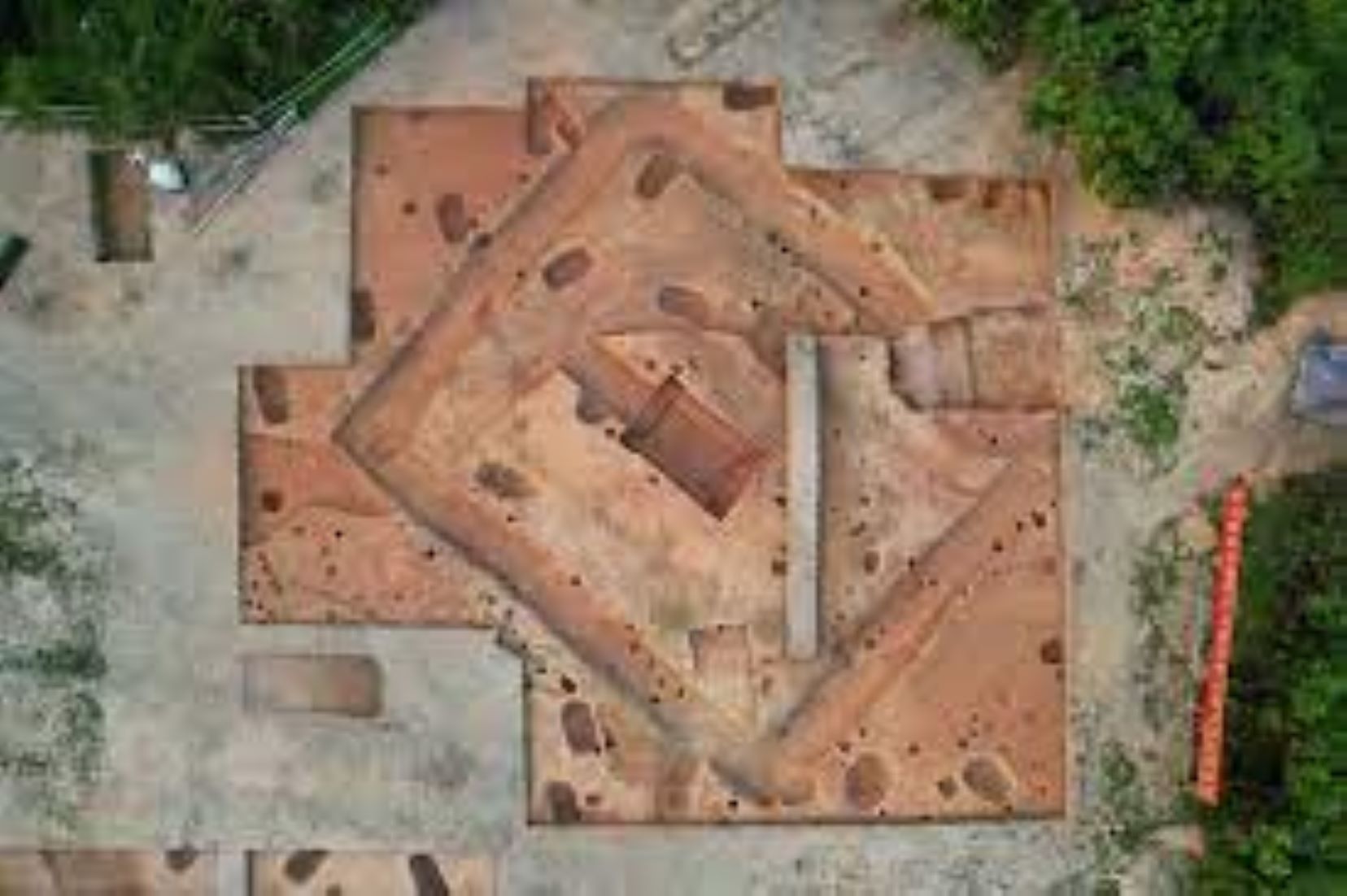GUANGZHOU, Oct 22 (NNN-XINHUA) – A large tomb dating back to the Western Han Dynasty (202 B.C.-25 A.D.), has been unearthed in Guangzhou, south China’s Guangdong Province, according to Guangzhou’s institute of cultural relics and archaeology.
Built on the crest of a hill at the Huogaidingling site in Guangzhou, the tomb was moated by an 18.6-metre-long trench and contained a wooden coffin placed above gravel.
The tomb is believed to have belonged to an individual of high social status in the Nanyue Kingdom, as its construction style is similar to that of a royal mausoleum in Shaoxing City, east China’s Zhejiang Province. It is the first time archaeologists have discovered a moated tomb in south China.
Nanyue, meaning “Yue in the south” in Chinese, was a kingdom whose people were related to those living in the Yue Kingdom, which preceded the Qin Dynasty (221 B.C.-207 B.C.).
Densely distributed column holes were also found around the tomb, indicating that a building where people would hold sacrificial rituals once stood on the site, the researchers said.
According to their on-site findings, they believe that the features of the tomb and the funerary objects contained within, bear similarity to those of ancient Yue nobles in Zhejiang.
The discovery could aid the study of the development and spread of Yue culture from the Taihu Lake area, through the Pearl River Delta and into northern Vietnam, according to the institute.– NNN-XINHUA






